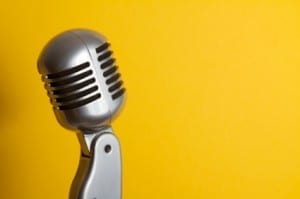Home Recording Academy: 3 Tips for Better Mic Placement in Your Home Studio
Microphone placement is perhaps more important in creating your recorded sound than the actual microphone you use. The general breakdown of the sound you get regarding the order of importance is something like this:
- 50 percent: The instrument and the player
- 20 percent: Microphone position
- 20 percent: Room sound
- 10 percent: Choice of microphone
While the actual numbers could be debated until the end of time (and vary depending on a huge number of other variables), mic placement indeed plays a huge role in your final sound.
This is particularly true in home recording studios, where the room sound is often the variable home engineers have the least amount of control over. Here are a few tips to help determine the best mic placement in your studio.
Forget the ‘Fix It in the Mix’ Attitude

You’ll constantly be in the process of learning your room, and this is something that’s just as true in million-dollar studios as it is in home studios. One great way to speed up this process is not to rely on your arsenal of effects to cover up bad microphone placement results.
When getting your sounds, don't use any initial EQ or Compression on your track; that way, you get a more accurate feel of exactly how your mic is picking up the audio source. Say you’re recording an acoustic guitar track, and the recordings have some unpleasant, shrill highs. Instead of deciding to cut the frequencies when mixing, try moving the mic you’re using around until you naturally get rid of those sounds.
This advice goes for every track you cut, and will give you a huge head-start on your way to a great mix.
Experiment, Experiment, Experiment
Let’s continue with the acoustic guitar example. Typically, if you’re mono mic-ing an acoustic, you’ll want to put the mic slightly higher than the fretboard level and slightly up the neck of the guitar, with the mic aimed at the soundhole. This is a great place to start, but it’s not going to be ideal for every microphone on every guitar in every room.
Instead, you can treat this as something of a default position and slightly adjust the position until you find the sound you want. This will take some time, but if you are often recording the same instrument in the same room, you’ll soon learn what works best for you and how to tweak your mic position when you need a different sound than you normally do.
Don’t Be Afraid to Switch Gear
Though the two tips above can be great, sometimes you’ll still find that you’re just not getting the sound you need for your project. When this happens, if possible, change the gear you are using.
If you’re using a condenser mic to record that acoustic guitar track, switch over to a dynamic mic to see if you can get a more desirable sound. Sometimes you may have to try out another guitar.
Whatever you have to do, always remember it is worth spending that extra time in the studio to get a great sound than to forever live with a subpar recording.
If you have a mix that you need mastered, send it to us here:
We’ll master it for you and send you a free sample to review.




